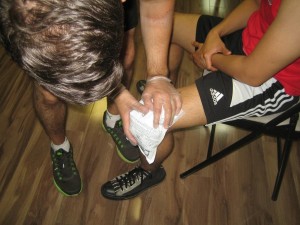CPR training has become very popular in Oregon over the recent years, as the WHO and CDC stress about the dangers cardiac diseases have on the population. Different providers offer different courses; Portland CPR primarily specializes in basic and advanced CPR courses that include first aid. We offer our courses through the week at various schedules (find the complete list on our website, along with program tuition fees).
Courses can last anywhere between four-hour single sessions to 16-hour courses that take two days to complete. Basic courses are typically shorter, taking only a single day, while advanced courses are much longer. We also have re-certification or renewal courses available for three of our courses.
Enrollment
The Portland CPR website has an online application form (a popular method among students) that can be filled out at any time of the day. If you send in your details or even have a simple inquiry through the website or e-mail, we will surely get back to you during our regular operating hours. We also encourage prospective students to enroll in person or make a visit to our training location in Portland, Oregon.
What to expect from CPR training

A CPR training course will either focus on or base its curriculum on the core CPR skills of compression, ventilation, and defibrillation. For out-of-hospital cardiac arrests, the first two skills are typically the only one’s used by a bystander while the last can only be done by EMTs, when a defibrillator (AED) is available.
Beyond these three skills, we also teach our trainees how to recognize a heart attack or cardiac arrest. Here is a look into what you should expect to assess if a person has or is experiencing cardiac arrest.
- Hemiparesthesia (numbness of one side of the body – usually half of the face and the right or left side of the upper and lower extremities)
- Confusion and decreasing level of consciousness
- Vision problems, usually in one eye
- Problems with mobility
- Dizziness and loss of balance
- Severe headache and/or chest pain with no apparent cause
- Loss of consciousness/fainting
Courses you can enroll in and how long they take to complete
Basic CPR training
- Basic CPR and AED (Heartsaver, general public) – Runs over a single-session over 4 hours
- Basic CPR and AED C (Heartsaver C, health care providers) – Runs over a single-session over 4.5 hours
- Basic Life Support for Health Care Providers – Runs over a single-session over 4.5 hours; re-certification is 4 hours
Advanced CPR training
- Advanced Cardiac Life Support (ACLS, health professionals) – Takes two days to finish, with 16 hours in total; re-certification is approximately 6 hours
- Pediatric Advanced Life Support (PALS, health professionals) – Takes two days to complete finish, with 14 hours in total; re-certification is approximately 6/8 hours
If you get certified, remember to renew your certificate every 2 years. We do not allow rescuers with expired credentials to sign up for any of our re-certification classes.
